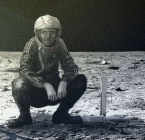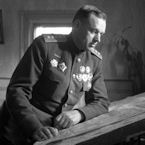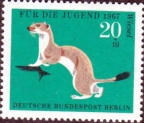Stoat
Posts: 37
Joined: 9/20/2011
From: Toronto, Canada
Status: offline

|
quote:
ORIGINAL: herwin
(snip)
... it took time for a unit organised for a retrograde movement to deploy and occupy defensive positions, and it was important for a pursuing force to attack that position before it stabilised. As an example of the implementation of this idea in the West, the MG battalion of the late-WWI and early-WWII British infantry division was given the assets it needed to organise brigade and division stop lines--prepared heavy MG positions that retreating infantry could retreat to and organise a defence around.
The game lacks a concept of formation, so the delay to go from a column formation organised for movement to a linear formation organised for combat or vice versa is missing. The shift in formation, by the way, once had a specialised terminology: a unit deployed from column to line, and ployed from line into column... (snip)
... This tempo superiority was the reason mobile forces in the German Army in the East were able to defend sectors for extended periods... (snip)
Some very good points patiently made throughout this thread! I also feel that an expanded use of formation or stance would add to the game.
I'd just recently heard of Viktor Suvorov & had been reading his 1990 "Icebreaker" while playing through my most recent GGWitE 1P CG (Axis). Naturally I enjoyed defending Europe from Bolshevik enslavement and pre-empting the pending Soviet attack:
http://en.wikipedia.org/wiki/Soviet_offensive_plans_controversy
One of the central elements of Suvorov's thesis is that the Sowjetunion was deeply, deeply screwed by Barbarossa, because their immense forces and assets (stockpiles, use of rail net etc. etc.) were entirely deployed in furtherance of their plans for a huge offensive to commence July 1941, and that this deployment, although entirely sensible for an offensive, was entirely unsuited to the good conduct of a defensive war.
I started to think about how, while GGWitE could represent the physical disposition of Soviet forces, it could only represent the shift in stance by broad, special rules, e.g. Turn 1 Surprise rules, morale rules to the effect that the Soviets "suck in 1941, but not so much in 1942", etc.
As an aside, it thus seems to me that GGWitE implicitly rejects the Soviet Offensive Plans hypothesis, and that's fine, and not my main point, which is about modeling unit stance/formation. The game does offer some abstraction of stance or formation in its treatment of Static Units and units in Reserve Mode.
I fully accept what you say about the importance of stance/formation, and if I were hacking up the GGWitE engine, would put a few thoughts out for consideration:
1) Goal: Implement satisfying representation of unit stance/formation to GGWitE while avoiding big structural changes to the great engine.
2) Provide expanded representation of unit stance through the Unit Mode interface (e.g. Ready/Reserve/Refit) to include other Modes which could include STATIC, MOBILE (Elastic Defence/Hasty Attack), BUILDUP (preparation required to BLITZ), BLITZ (breakout/exploitation), MARCH (Route March/Column), ROUTED or whatever small number of stances are deemed best to incorporate.
3) Bring the Static Units rules and HQ Buildup rules into the Unit Mode rules for consistency.
4) Impose costs for changing Unit Modes. The costs of the changes are in different units, e.g in Movement Points (MP), Action Points (AP). For instance the intent of current rules regarding changes in vehicles or supplies for a unit entering/leaving Static or Buildup mode can largely be preserved.
5) Special rules for changing Unit Mode can add to the richness of the very simple underlying abstraction (a small list of Unit Modes). For instance, the cost (and/or effect) of a unit going to 'MOBILE' (Elastic Defence) can be affected by its Leader's (Init + Mech) ratings. A cost in MP to change Unit Modes could be partially a function of Unit Morale, modelling the greater capability & flexibility of better formations.
6) A GC which accepts the Soviet Offensive Plans hypothesis could be created, wherein the Soviet forces are rather capable from the start, but will suffer heavily initially because the strategic offensive stance is unsuited to the current situation, and it will take months worth of AP and other spending & reorg to remedy this.
7) The Unit Mode changes can be administered by the existing GUI with minimal changes, i.e. by adding a few more options to the Unit Mode field wherever it appears (e.g. Commander's Report, unit view etc.), with some altered/additional messages in the Battle Report (e.g. "Wiking SS Motorized Division is conducting an Elastic Defence", informing the user of combat effects granted by a successful Rock-Paper-Scissors test of their MOBILE Unit Mode vs. the attacker's).
8) The Unit Mode changes would have effects principally on movement and combat, and also on some other rules, e.g. Fortifications and Supply.
9) Combat Effects: In order to simplify implementation, use a 'Rock-Paper-Scissors' chart for each combat effect (an x, y grid with the Unit Mode for the attacking unit on one axis & the Unit Mode for the defending unit on the other axis). The value in this lookup table is the multiplier for that combat effect. E.g. for the 'Attacker Losses' lookup table, If attackType = 'MOBILE_DELIBERATE' And defenderMode = 'STATIC' Then attackerLossesMultiplier = 3 (3x normal). In this way, Unit Mode can affect many aspects of combat in a fairly straightforward way through a small number of lookup tables that are used to add relevant effects to specific 'Rock-Paper-Scissors' scenarios. While simple, these multipliers can add quite a lot of satisfaction to the abstraction.
10) Movement Effects - Regular Ground Movement: Simply, the MP cost to enter a hex is affected by Unit Mode.
11) Movement Effects - ZOC costs: In order to simplify implementation, use a 'Rock-Paper-Scissors' chart for each ZOC effect (an x, y grid with the Unit Mode for the moving unit on one axis & the Unit Mode for the (most restrictive) defending unit on the other axis). The lookup value is the malus or multiplier imposed by the defending unit. E.g. a German unit in MARCH Unit Mode moves through the ZOC of two Soviet units, one in BUILDUP and the other in MOBILE Unit Mode. The MOBILE enemy imposes a greater ZOC cost than the enemy in BUILUP, so the table is consulted to get the (significant) ZOC cost imposed by a MOBILE enemy on a moving unit on the MARCH. Tweaked regular MP costs & these changes to ZOC costs could add significant richness to how easy or hard it is to "gobble up space" in different scenarios.
12) Effects on Fortifications, Supply, etc. Effects of Unit Mode on other game rules & data structures can be just about the same as they are now, except there could be a consistent refactoring or restatement of all these special rules to use the Unit Mode enumeration and refer to the (existing) Unit Mode field of the Unit objects where this would be beneficial.
Whew, quite a few thoughts just came out there, you got me thinking. Anyway, wanted to write them down & share them while I had them.
_____________________________
GGWitE = GröKAZ ("Greatest Wargame of All Time") - thx to GG, Company & Community for continuing to make it even better!
|
 Printable Version
Printable Version















 New Messages
New Messages No New Messages
No New Messages Hot Topic w/ New Messages
Hot Topic w/ New Messages Hot Topic w/o New Messages
Hot Topic w/o New Messages Locked w/ New Messages
Locked w/ New Messages Locked w/o New Messages
Locked w/o New Messages Post New Thread
Post New Thread